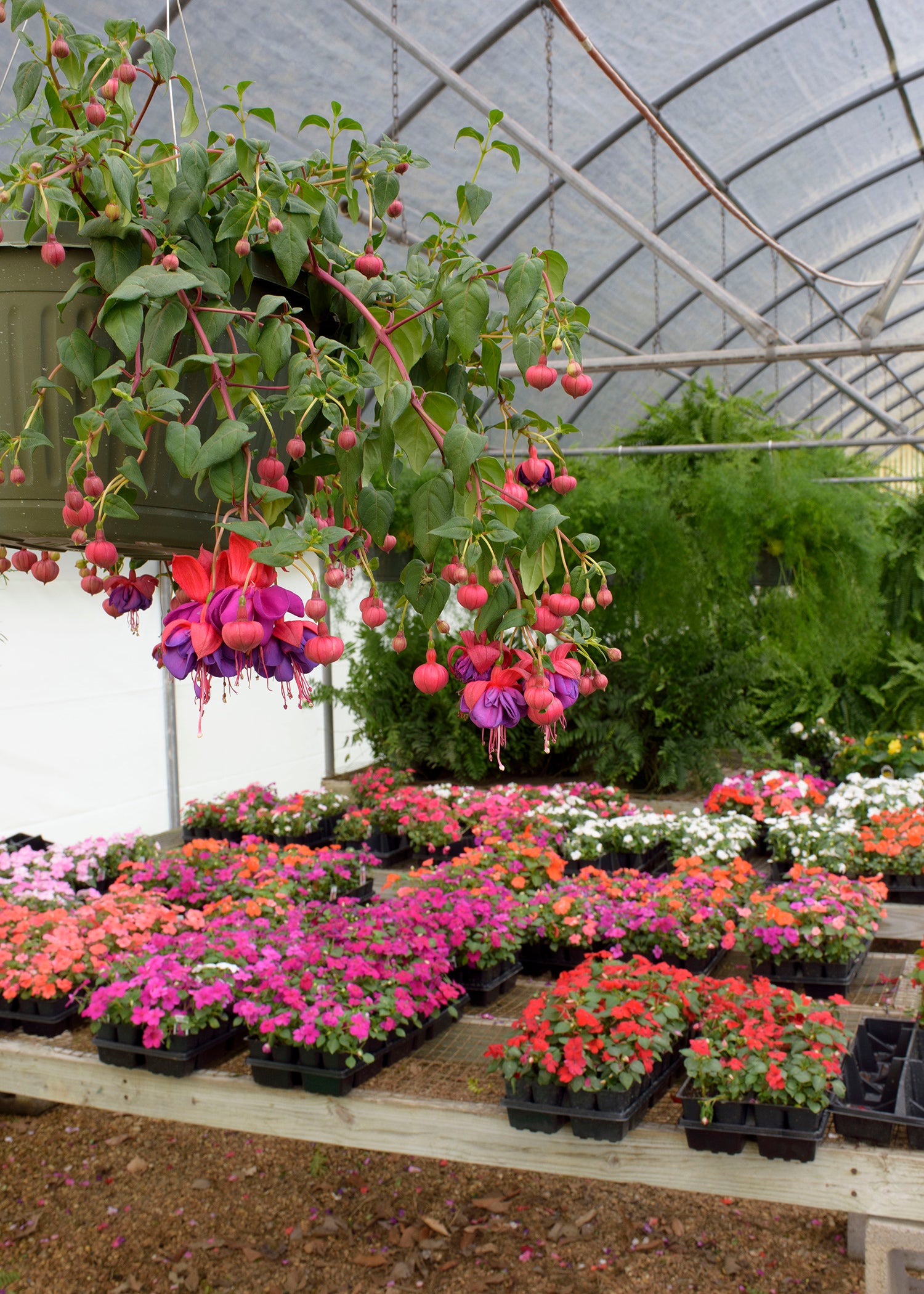Pandemic gave lasting boost to green industry
Published 2:19 pm Monday, March 7, 2022

- TRAYS -- Plants make people feel better, and the sales of garden plants increased during the pandemic as people made their personal corners of the world look better. (Photo by MSU Extension Service/Kevin Hudson) Alt text -- Trays of blooms set on tables in a greenhouse. ###
By Bonnie Coblentz
MSU Extension Service
STARKVILLE – Home lawns and landscapes have possibly never looked better, as consumer data show people changed buying habits and spent more on plant and landscape items during the pandemic.
Tricia Knight, director of coastal horticulture research at Mississippi State University’s South Mississippi Branch Experiment Station in Poplarville, said revenue for the green industry grew during the pandemic in part because people were looking for something positive amid all the uncertainty.
“Plants make people feel better, so there was the aesthetic aspect of making their little corner of their isolated world look and feel better,” said Knight, a researcher with the Mississippi Agricultural and Forestry Experiment Station. “It was a little thing that people had some control over.”
According to a study on COVID-19 pandemic gardening in the U.S. published February in HortTechnology, a journal of the American Society for Horticultural Science, Americans spent 8% more than normal on green industry products in 2020 compared to 2019. The horticulture or green industry encompasses input suppliers, production firms, wholesale distribution firms, horticultural service firms, and retail operations that sell plants and plant materials.
“The increase in sales in 2020 was driven by a combination of increased purchasing by long-term buyers and new entrants to the market,” the study states.
Some money was put into beautification, while additional funds were spent growing produce.
Mississippi was one of many states that classified garden centers as essential services, placing these businesses among the few places people could visit.
“I think some people ‘discovered’ plants and gardening at that time, and others decided that being a little more self-sufficient wasn’t a bad thing, so they decided to grow their own food,” she said.
The big question for retailers is determining how consumer spending will trend in the future. Answers to this question have financial implications for the green industry in Mississippi.
“Firms relying on these trends … to make future decisions need to have a better understanding of whether consumers will remain in the market and of the characteristics of consumers likely to remain in the market,” the study states.
Whenever people try new things, they typically find new interests that become part of their lives for the long-term. Data has shown that this is what happened during the pandemic, and there are more gardeners now than before.
“Even if some don’t become lifelong gardeners, they’ve hopefully developed a greater appreciation for plants and agriculture and our contributions to both food production and quality of life,” Knight said. “While ornamental horticulture may not feed the world, it does contribute to an increased quality of life.”
MSU supports the green industry in a variety of ways. MSU and MAFES researchers examine ways producers can be more profitable, developing data-based recommendations for such things as weed control, fertilizer and better propagation methods. They develop or test plant material for the local climate, put research plots on display at field days, and allow the needs and concerns of producers to drive their research focus areas.
Over the years, MSU researchers have developed new plant varieties through careful breeding programs designed to produce selections ideally suited to certain conditions.
“MSU has released six crape myrtle varieties, including Delta Jazz, the very first dark-leafed crape myrtle,” Knight said. “The other five crape myrtle varieties are green-leafed cultivars. Sequoyah has red flowers; Tishomingo, Neshoba and Pascagoula have purple flowers; and Shumaka has pink flowers.”
Ben Posadas, an Extension specialty crops marketing specialist at the MSU Coastal Research and Extension Center in Biloxi, has studied the contribution MSU research makes in support of the green industry.
“Sales contributions expanded from less than $1 billion in 2002 to almost $2.5 billion in 2018,” Posadas said. “The entire industry expanded from approximately 14,000 jobs in 2002 to nearly 17,000 jobs in 2018.”
MSU horticulture researchers and Extension specialists rely on industry feedback to ensure their research-based information is timely and relevant to the emerging and existing issues in the green industry.
“MSU Extension shares information, which leads to farmer experimentation and the gradual adoption of new practices if the innovation appears productive,” Posadas said. “As new technology is adopted, it changes input use and outputs increase, reducing the cost of production. take place, outputs increase, and production costs are reduced.
“The shaping of knowledge and observations from producers leads to other producers’ adoption of new methods,” Posadas said. “As specialists convey information to industry professionals, program evaluations document that the specialist expressed relevant data and did it in a readily usable format.”
Learn more about MSU’s support of the green industry at http://extension.msstate.edu/c


